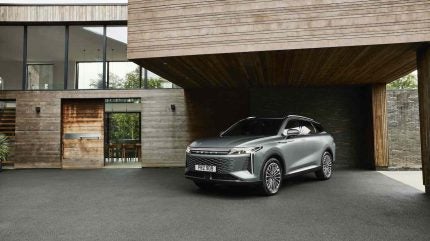
The tale of how Chery Auto came to win market share in major European countries is a fascinating one. Firstly, the quality of its cars is excellent and marketing slick. But the decision to launch Omoda and Jaecoo with a vast number of sales outlets was crucial.
The sheer volume of cars sold, particularly in the UK, is highly impressive. One Jaecoo model, the 7, even made it in to the country’s top ten best seller list last month. SAIC’s MG is the only other Chinese marque to have managed that achievement. Combined, Omoda and Jaecoo took three per cent of the UK market in August, year-to-date volume being respectively 9,990 and 11,681 units.

Discover B2B Marketing That Performs
Combine business intelligence and editorial excellence to reach engaged professionals across 36 leading media platforms.
Thanks to local assembly in Barcelona, Spain is another big volume market in our region and whilst Chery doesn’t mention this too loudly, Russia has also proved to be a place of great success. In the year to the end of August, data noted by BestSellingCarBlog show Chery itself selling 79,851 passenger vehicles, plus a further 19,090 for Omoda. Chinese OEMs in general continue to do well in the Russian market, GWM and Changan also racking up good volume in recent years.
Four Omoda models and more to come
An ever-expanding dealer network – there are now more than eighty in Britain – sees both Jaecoo and Omoda retailed from the same showrooms with the model line-up strong on electrification. The all-SUV Omoda range includes or will soon include the 5, electric E5, 7 and 9. It was the largest and most expensive of these four which I recently had the chance to spend a fair bit of time with.
At 4.8 m long the Omoda 9 is about the same size as the Skoda Kodiaq. And with pricing starting at GBP44,490, this is far from the outdated idea some have of Chinese cars as cheap, low quality things.
The PHEV sent to me for testing was perfectly put together, very economical, great looking, roomy and had many people asking all about it. What fascinated me was learning that nobody had heard of Chery, Jaecoo or Omoda, simply accepting that the 9 must be “a new Chinese electric model”.
Self-closing glass
Looks are fairly generic but that hasn’t stopped the likes of the Tesla Models 3 and Y from having been big sellers. And the quest for low aerodynamic drag is tending to make many cars look similar. So if the 9 is a little on the anonymous side to some eyes, that’s fine. There are however distinctive touches at either end including the lighting elements while what are big wheels and tyres fill the arches nicely.
The flush door handles extend outwards as the keyholder approaches and the car locks itself as you exit. However, the Omoda 9 has another little trick which sets it apart from almost every other car, at least ones that I have driven: any open window or glass roof panel will close itself before the car locks. I would prefer there to be no loud beep signifying locking but that might not annoy others.
In UK spec, the interior has a lot of luxurious features and a few things such as the door-positioned electric controls remind you of Mercedes-Benz. There’s also loads of space for five, 660 litres of boot volume and while not all of the plastics are of the squishy kind, most are. The test car came with quilted leather upholstery and a right-sized almost-round steering wheel with various physical controls strong on tactility.
Big power, longest range of any PHEV sold in UK
Like a Polestar 2, there is no Start/Stop button, you just select D or R and the 9 moves away. Then when you come to a halt, press the end of the same stalk for P and power is cut followed by the parking brake being activated. It has the feel of an EV, the thing is just so quiet most of the time and gearchanges (there are a mere three ratios) are hard to detect. There is loads of power too, that being 330 kW or 449 PS plus 700 Nm/516 lb-ft of torque from a pair of motors and a 1.5-litre engine.
With so much in reserve, four-wheel drive is needed so grip is never an issue. The suspension tuning veers towards comfort: keen drivers might be better served looking elsewhere. There again, will the typical family buyers worry too much about steering which hasn’t got the feel of a BMW or a Ford? Such people will likely be very keen on the long distances between refuelling, including almost 100 miles on electrons alone. Let’s not also forget the generous specification and pricing which undercuts most of the competition.
Summary
It might be far from the class standard when it comes to sharp chassis responses and yet will that matter to the target buyer group? Probably not. For those open to new brands (backed up by a comprehensive warranty), the Omoda 9 looks tempting. Especially with the big dealer network which matters a lot for servicing.
The Omoda 9 SHS goes from 0-62 mph in 4.9 seconds, while thanks to a 34 kW battery the EV range is up to 93 miles and combined petrol-electric range is in excess of 700 miles.






